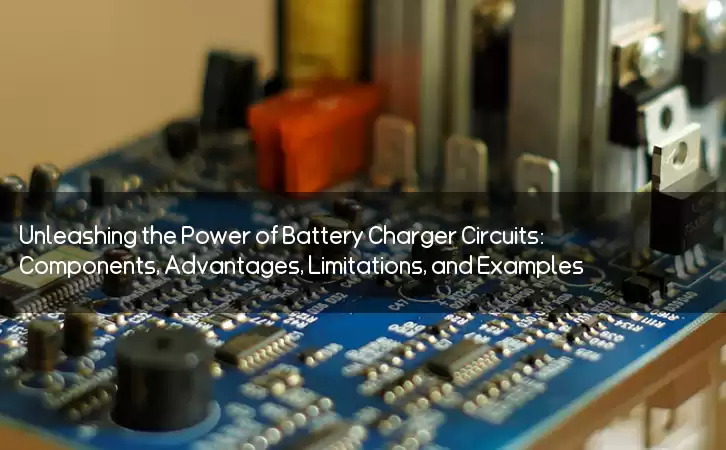Information Center
Unleashing the Power of Battery Charger Circuits: Components, Advantages, Limitations, and Examples
Published:2023-08-01 10:33:34 Author:Green WCND Views:54Battery Charger Circuit: An Introduction

A battery charger is an essential tool for maintaining the health of batteries in various devices, such as mobile phones, laptops, and electric vehicles. A battery charger circuit is a basic electronic circuit that converts AC power into DC power to charge the battery. This article will discuss the key components of a battery charger circuit, its advantages and limitations, and some examples of popular battery charger circuits.

Key Components of a Battery Charger Circuit

The key components of a battery charger circuit are the transformer, rectifier, filter, regulator, and control circuit. The transformer is used to step down the AC voltage from the mains to a low voltage level that can be used by the circuit. The rectifier converts the AC power into DC power. However, the output voltage of the rectifier is not smooth, and it contains a lot of ripple. To remove this ripple, a filter circuit is used. The regulator controls the output voltage of the circuit to ensure that the battery is charged properly and prevents overcharging or undercharging. The control circuit is used to manage different charging profiles, such as trickle charging, fast charging, or pulse charging, depending on the type of battery being charged.
Advantages and Limitations of Battery Charger Circuits
Battery charger circuits have many advantages. They are cost-effective, easy to implement, and versatile. They can be used for charging different types of batteries, such as lead-acid, lithium-ion, or nickel-cadmium batteries. They can be designed to provide different charging profiles, depending on the battery’s specifications. Battery charger circuits are also efficient, with a typical efficiency of around 80%. This means that most of the input power is converted into usable DC power.
However, battery charger circuits have some limitations. They require a source of AC power and cannot operate on DC power alone. They also require a certain level of input voltage and current to operate effectively. If the input voltage or current is too low, the charging time will be longer. If the input voltage or current is too high, the battery may be damaged due to overcharging. Some types of batteries require specific charging conditions, which may not be achievable using a basic battery charger circuit.
Examples of Popular Battery Charger Circuits
There are many types of battery charger circuits available, depending on the application and battery type. Some popular battery charger circuits include:
1. Linear charger circuit: This circuit is simple and cost-effective, but not very efficient. It can be used for charging small batteries, such as those used in mobile phones and cameras.
2. Switching charger circuit: This circuit is more complex but more efficient than the linear charger circuit. It can be used for charging larger batteries, such as those used in laptops and electric vehicles.
3. Pulse charger circuit: This circuit uses a pulsing current to charge the battery, which can improve its lifespan and performance. It can be used for charging lead-acid batteries, such as those used in cars and boats.
Conclusion
In summary, a battery charger circuit is a basic electronic circuit used to convert AC power into DC power to charge batteries. It consists of several key components, including the transformer, rectifier, filter, regulator, and control circuit. Battery charger circuits have many advantages, such as being cost-effective, versatile, and efficient. However, they also have some limitations, such as requiring a source of AC power and being limited by the input voltage and current. Battery charger circuits are used in various applications, such as mobile phones, laptops, and electric vehicles, and there are many types of circuits available, depending on the battery type and application.
Battery testers of different voltages exhibit significant differences in several aspects, and a 12V battery tester is primarily used for testing a range of spec···
Battery Testers (battery capacity testers/battery detectors) indeed come in various types tailored for different products. These different types of battery test···
The advantages and disadvantages of battery testers are as follows:AdvantagesFlexibility:Battery testers can accommodate various testing modes, making them adap···
Understanding the testing accuracy of golf cart battery testers is crucial for ensuring the precision of test results. Here are some methods to assess the testi···





